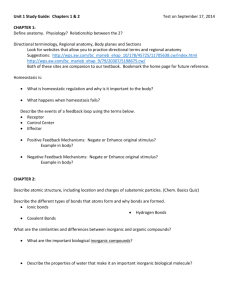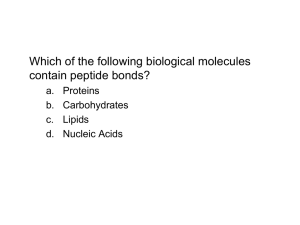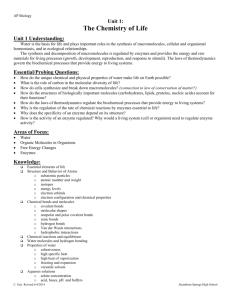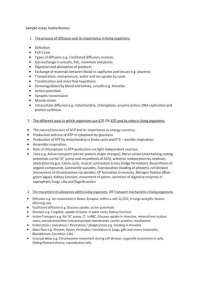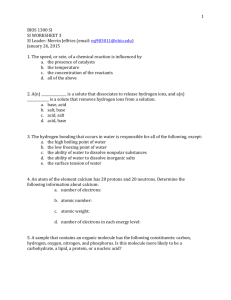Unit 1 Study Guide: Chapters 1 & 2
advertisement
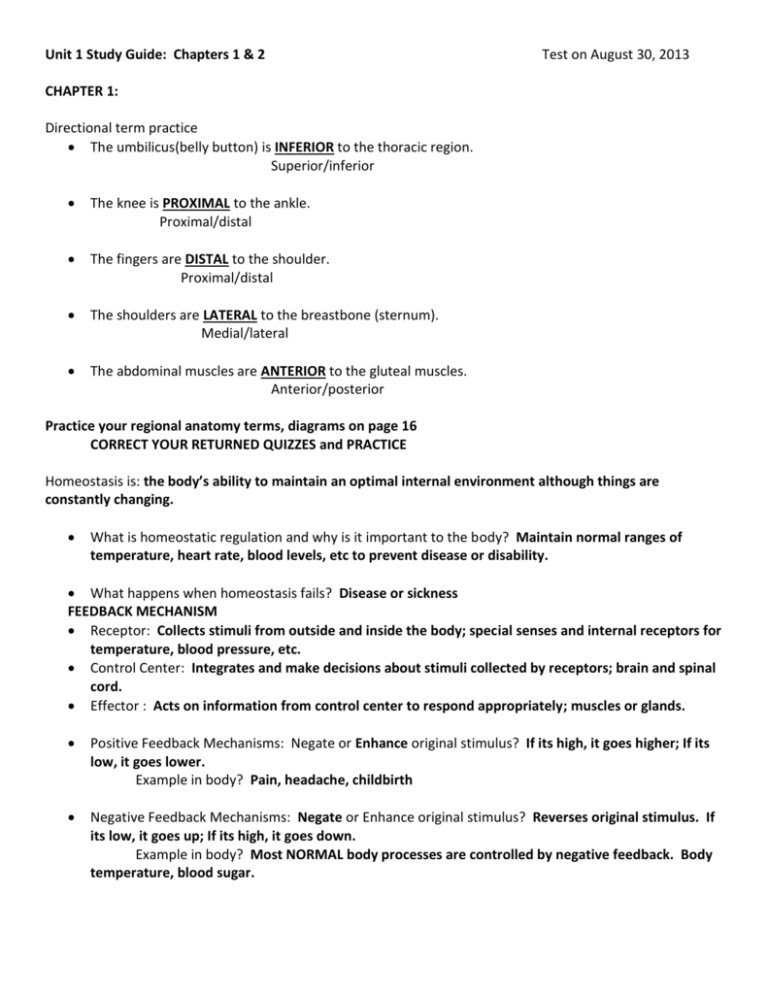
Unit 1 Study Guide: Chapters 1 & 2 Test on August 30, 2013 CHAPTER 1: Directional term practice The umbilicus(belly button) is INFERIOR to the thoracic region. Superior/inferior The knee is PROXIMAL to the ankle. Proximal/distal The fingers are DISTAL to the shoulder. Proximal/distal The shoulders are LATERAL to the breastbone (sternum). Medial/lateral The abdominal muscles are ANTERIOR to the gluteal muscles. Anterior/posterior Practice your regional anatomy terms, diagrams on page 16 CORRECT YOUR RETURNED QUIZZES and PRACTICE Homeostasis is: the body’s ability to maintain an optimal internal environment although things are constantly changing. What is homeostatic regulation and why is it important to the body? Maintain normal ranges of temperature, heart rate, blood levels, etc to prevent disease or disability. What happens when homeostasis fails? Disease or sickness FEEDBACK MECHANISM Receptor: Collects stimuli from outside and inside the body; special senses and internal receptors for temperature, blood pressure, etc. Control Center: Integrates and make decisions about stimuli collected by receptors; brain and spinal cord. Effector : Acts on information from control center to respond appropriately; muscles or glands. Positive Feedback Mechanisms: Negate or Enhance original stimulus? If its high, it goes higher; If its low, it goes lower. Example in body? Pain, headache, childbirth Negative Feedback Mechanisms: Negate or Enhance original stimulus? Reverses original stimulus. If its low, it goes up; If its high, it goes down. Example in body? Most NORMAL body processes are controlled by negative feedback. Body temperature, blood sugar. CHAPTER 2: Describe atomic structure, including location and charges of subatomic particles. Nucleus contains Protons (+) and Neutrons (no charge); Electrons (-) surround nucleus Describe the different types of bonds that atoms form and why bonds are formed. Ionic bonds: Transfer of electrons from one atom to another; ion attraction allows them to be pulled close to one another. Covalent Bonds: Equal/unequal sharing of electrons between atoms; difficult to separate. Hydrogen Bonds: important, weak intramolecular bonds that hold structures together. What is the main difference between inorganic and organic compounds? INORGANIC: lacks carbon as a central atom, small, diffuses easily through cell membrane. ORGANIC: contains carbon as a central atom, large, must pass thorugh channels to enter/exit cell. What are the important biological inorganic compounds? Water, gases, some acids and bases, electrolytes. Describe the properties of water that make it an important inorganic biological molecule? Universal solvent Cushion/Protection Lubricant base High heat capacity – resists changes in temperature Participates in many chemical reactions What are the four major organic macromolecules? CORRECT AND KNOW YOUR TABLE FROM THE LAST QUIZ! 1. Carbohydrates: what does our body eventually break a glucose molecule into? ATP 2. Lipids: Know the general function of the following lipids: Triglycerides: ENERGY Phospholipids: CELL MEMBRANE STRUCTURE 3. Proteins: what 2 categories of proteins does the human body make? STRUCTURAL GLOBULAR Describe the four structures of protein molecules PRIMARY: Straight chain SECONDARY: alpha helix or beta-pleated sheet TERTIARY: alpha or beta chain folded on itself QUARTENARY: 2 or more tertiary structure held together by central molecule. What does an amino acid compound look like? What makes each amino acid different from another? The R group makes each Amino Acid different from another amino acid. Draw an amino acid below. What kind of bonds link amino acids together? PEPTIDE BONDS What kinds of bonds hold the structures of proteins together? HYDROGEN BONDS 4. Nucleic Acids: STUDY TABLE and KNOW STRUCTURE OF NUCLEOTIDE Enzyme activity What are enzymes? PROTEINS that act as BIOLOGICAL CATALYSTS. ALL ENZYMES ARE PROTEINS but NOT ALL PROTEINS ARE ENZYMES Describe the structure of an enzyme, including the active site. ENZYMES ARE RELIANT ON SHAPE. THE FOLDING OF THE GLOBULAR PROTEIN, HELD TOGETHER BY HYDROGEN BONDS, PRODUCES AN ACTIVE SITE (LOCK) THAT A SPECIFIC CHEMICAL WILL FIT INTO (KEY) IN ORDER TO CATALYZE SPECIFIC CHEMICAL REACTIONS. What happens when an enzyme is denatured? THE HYDROGEN BONDS ARE BROKEN AND THE PROTEIN/ENZYME LOSES SHAPE. This means the shape of the active site is lost and the enzyme can no longer function as designed. Provide a biological example in the body of proteins being denatured. High fever is a good human biological example of enzyme denaturation. When we get a fever, the high body temperature causes functional enzymes to lose their shape and they can no longer perform important biological functions.
